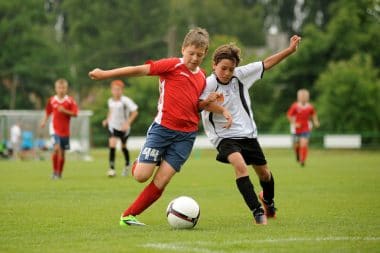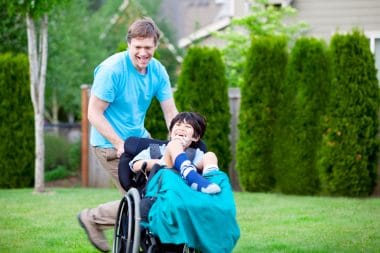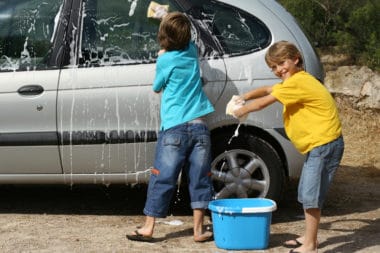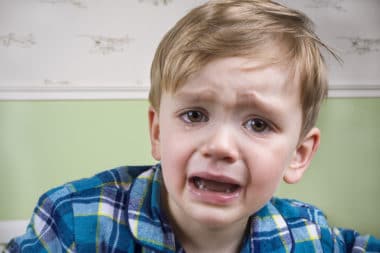Your sweet, loving, happy one year old has just walked passed your, raised their little hand and what you expect to be a loving pat turns to be a tiny fist landing on your head. Or your child is at a playdate where another child takes a toy your little one had their eyes on and next thing you know your child has smacked them and retaken the toy. None of these scenarios are good ones.Â
But to ease your mind hitting between the ages of one to two and a half is almost normal. As long as it is short lived. Long term constant hitting, not so normal, hitting to help communicate is in line with normal milestones. Any hitting past the age of three is also not normal, but we are just looking at what you can do to help your little one with their new found love of hitting.Â
Now that you know you aren’t alone in this new phase your child has grown into, you can take a deep breath.
Why do toddlers hit?
There are lots of reasons why your child may hit, tantrums, hungry, sleepy, defending their turf, trying to gain space, unable to communicate what they are wanting, or even if they have a fighter temperament.Â
Usually a hit is led by some kind of emotional release, whether that is fear, anger, or tiredness. Sometimes the child is just trying to figure out what happens if they hit someone, cause and affect style or you had a crazy reaction one time they hit and they are trying to get a similar reaction from you.Â
Not all children will hit, and sometimes children will only hit certain people, whether that’s just mom, just dad, or siblings. Pinpointing the cause of the hitting can be the best way to prevent it from happening. Â
Finding out what your child is wanting from the hit can be hard and almost detective level work. Once you pinpoint that your child is a hitter though you will want to up the supervision, while still keeping your distance. Sometimes a child will turn and hit if they are needing space, so you don’t want to invade their bubble too closely if this is what triggers them.Â
So what are you supposed to do once you find out your child is going through the hitting stage?Â
First after finding their triggers, is to try and remain calm. Don’t get frustrated. Remember that most likely this is just a phase they are going through, and in a little bit of time this will pass. This is just another milestone to check off, like crawling, walking, jumping, you can say you successfully made it through the hitting milestone.
Now even though this is a phase it is still not ok to hit, and you will want to make sure you let your child know it’s not ok to hit, otherwise it may no longer be a short term phase, but a long term battle.Â
If your child hits you particularly they are trying to see if they can get a reaction out of you, so make sure if it happens you keep your voice calm, but let them know it isn’t ok. Communicate with them, say things like, “That hurts Mommy when you do that.” Slapping or spanking them back can give them mixed messages, so be careful with that approach.Â
Some children respond better instead of telling them No or Don’t do, with positive things. So changing, “No we don’t hit.” to “Let’s give nice pats.” Then nicely take their hand and show them what a nice pat is and how they do it. Guiding acceptable behaviour is helpful for your child to know what they expect. Â
Young children around one years old have limited communication of what they understand what you are saying as well as what they can communicate to you. Keep commands short and straight forward. When a nice pat is done correctly make sure you give lots of praise and hugs for them doing what you asked. Â
If you are at a playdate and you can see your child starting to get sleepy, or angry that another child is playing with a toy, you can remove them from the situation before it escalates. If it is too late and your child has started to escalate, you can always take them aside and calm them. How you calm can be dependent on the child, but it could be a hug, deep breathing, or even you singing them a little song.Â
In some cases it is better to divert, and distract instead of correcting. Almost have no reaction to the hitting, then they will see they aren’t getting extra attention. If they hit another child though, check the child is ok before moving on to calm down your own child. Â
Usually at this age, hitting is not malicious. They are just exploring their world, or trying to communicate something they don’t have words for yet. If you notice your child hits you when they start to get sleepy. Hold their little hands and say, “Say, sleepy, night night.” Help them learn the words to describe what they are feeling.
If your child laughs when they hit you, it usually isn’t because they think it is funny. Laughter is a release of emotion. Adults will laugh inappropriately if they are nervous, scared, or angry sometimes. This is the same thing for your one year old. They are just releasing built up emotion the only way they know with hitting and laughing. Â
Other things to try is to limit the shows they are watching with violence. If they are watching violent things, they may think hitting is normal. You yourself should be modeling non-aggression as well. Encouraging gentle play can also be helpful. This can be done with a stuffed animal and showing them how to pat the animal nicely. Â
New Live TV Video – Parenting #1 The Toddler Years
Takeaway
Children that hit from the age of one years old to two is a normal sensory exploration. Though it can be a frustrating time, remember you aren’t the only one who has a child going through this, and most likely it is a phase that should be short lived. Active supervision and interference can help your child get through this phase quickly and without too much damage done to anyone or anything. Finding what triggers the hitting can help you manage and feel more at ease when out and about with your child.Â
Toddler hitting? Hitting between the ages of one to two and a half is almost normal. Learn more here! #HealthStatus
Hitting to help communicate is in line with normal milestones
Sources:
https://www.seleni.org/advice-support/2018/3/15/5-tips-for-taming-tantrums?rq=tantrums&gclid=CjwKCAjwmv-DBhAMEiwA7xYrd1lStZl9GjhuAHIx-i097-I8RaNabk5iYS-42QyNrURH55HMuDa2dBoCYy4QAvD_BwE
https://americanspcc.org/postive-parenting-guide-for-toddlers-to-hit/?gclid=CjwKCAjwmv-DBhAMEiwA7xYrdwKd3qwsJdBkOX8QlIHvV6V5zngfr2OGvx5pRRPQY0WjILl2U5cKJBoCY6oQAvD_BwE
https://www.positiveparentingsolutions.com/parenting/dos-and-donts-to-end-hitting-and-biting-for-good-part-1
https://www.parents.com/toddlers-preschoolers/development/behavioral/tough-toddlers-4-common-triggers-for-hitting-and-biting/
https://www.handinhandparenting.org/2014/02/toddler-hits-you/
https://www.irishtimes.com/life-and-style/health-family/parenting/ask-the-expert-dealing-with-a-slap-happy-one-year-old-1.1744668
https://www.askdrsears.com/topics/parenting/discipline-behavior/bothersome-behaviors/biting-and-hitting-16-ways-stop-it









Reply